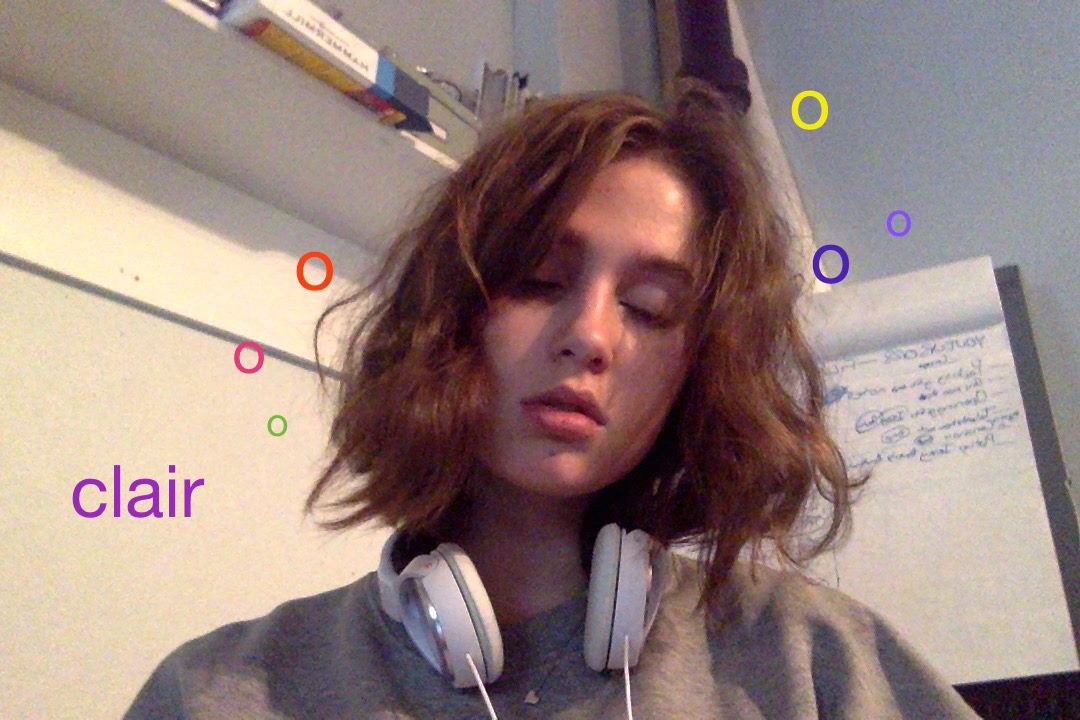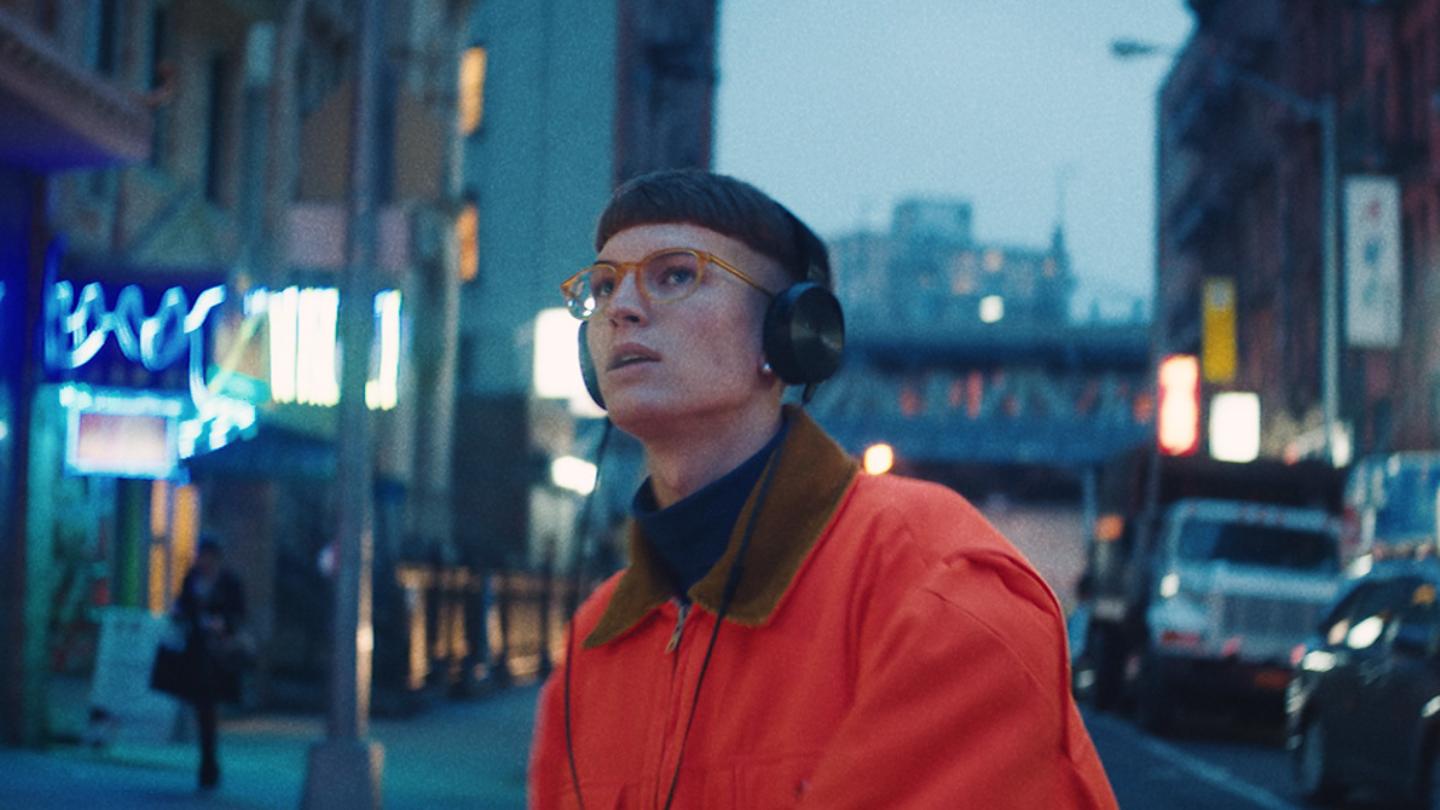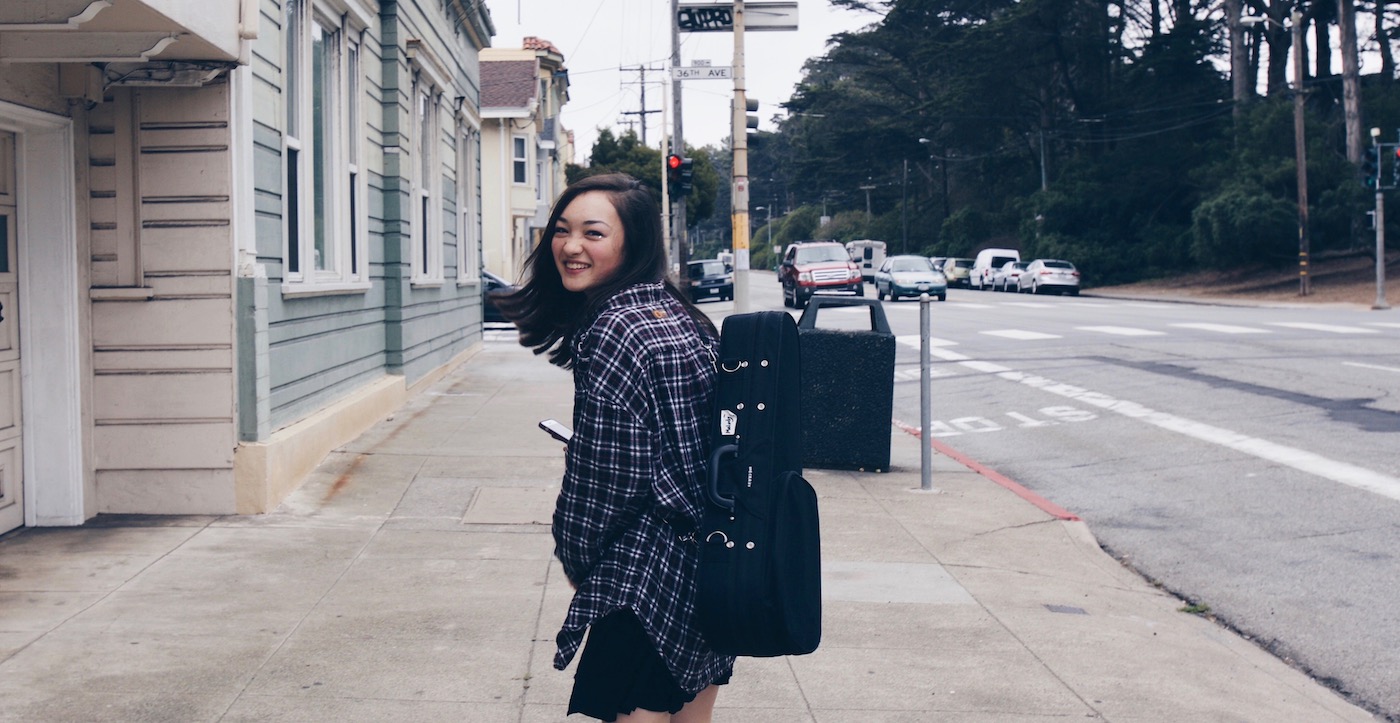If you know how to use Photo Booth and GarageBand (oh, and serendipitously possess a serene singing voice and/or virtuosic songwriting skills), then you too can become a pop star. There’s a rising crop of artists — like 19-year-old YouTube sensation Clairo — showing the world that a tune created in GarageBand can be just as catchy and radio-friendly as one produced by Pharrell or Max Martin. The fast-emerging DIY, lo-fi sound is called “bedroom pop,” and it’s overtaken sites like SoundCloud and Bandcamp.
These are the hallmarks of bedroom pop: contemplative lyrics, ambient sounds, and, above all else, authenticity. As Philadelphia-based singer Gus Dapperton says, employing a DIY approach to music has allowed artists to “play around” with what is considered pop or not — and be unburdened by cumbersome things like budgets and deadlines. Which, consequently, has led to artists like the ukulele-playing mxmtoon being embraced as pop.
But how exactly does someone reach internet fame without leaving their bedroom? One universally popular recommendation is using Ableton, a music production software, to create your songs. With Ableton, artists are able to scavenge the web for free samples and plugins to beef up their production. “There are always ways around the standard expenses of making music,” Warren Wolfe, an NYC-based artist tells i-D. “There are so many people who are caught up on things like, Oh, what did you record this vocal with? or What synth plugin do you have? If you’re an artist, the emotion of what you create is always going to outweigh the technical shortcomings or resources that you have.”
Want to know more about crafting that next Top 40 hit? i-D talked to five rising bedroom artists — Clairo, Gus Dapperton, mxmtoon, Warren Wolfe, and Elijah Bank$y — about how to produce undeniable bangers in your pajamas.

Warren Wolfe
Warren Wolfe transforms familiar pop tropes into queer musical dreamscapes and creates airy, poetic explorations of identity, love, and belonging. When we talked to Warren earlier this year, he spoke about growing more comfortable with singing unquestionably queer lyrics. Producing tracks in his bedroom is part of his effort “to express myself as a vocalist and producer without boundaries.” His latest song, “Stranger,” is the result of his growing self-assuredness. It’s a frustration-heavy track that ruminates on the darkly ironic emptiness anonymous hookup apps can produce. “There’s nothing stranger than waking up with a stranger,” Warren growls, comfortable in his skin.
Describe your creative process.
I really emphasize melodies, first and foremost. I love to just sing them in Voice Memos on iTunes. Kind of just mumbling jibberish. And usually that will end up being the chorus or the chord progression of the song. Then I’ll just really take that and maybe start writing lyrics to it right away, but I like to get producing really early on.
How do you put your songs together?
I’ll be in my bedroom on my computer at my desk using Ableton. It’s a DAW [digital audio workstation] — like an advanced GarageBand. You can mix in audio tracks and MIDI tracks. You can play the letter keys on your computer like a literal piano keyboard. And then I have a really big library of what they call “plugins.” Each plugin contains different synth noises, like ambient stuff or really electronic [sounds]. So for my last track, “Stranger,” I used pretty much entirely this one plugin called FM8. I just found a lot of sounds that I liked. And a lot of my friends give me their plugins, because they’re really expensive.
I record my vocals in my bedroom with a condenser mic, which is pretty standard. I really like doing big vocal background arrangements, so I’ll record layers and layers of these chorusy vocals.
What draws you to using your bedroom as a studio? Is it a safe space for you?
Yeah, totally. There’s something about being in your bedroom — there’s no time limit, you’re not paying for anything. I just feel really comfortable expressing myself in that setting. I kind of just yell into my mic and no one’s listening — besides my roommates. It’s just way more chill. I’ve never had a lot of experience working in studios, because it’s something I usually don’t have access to. When I first started making music I just learned it through my friends who were also very DIY or through literally going on YouTube and watching tutorials on how to use Ableton.
When it comes to making music, what are the biggest lessons you’ve learned?
You have to really believe in what you’re making and be true to yourself. Because when I first started making music I wasn’t in a good state and that translated in my songs. I was insincere in a sort of way, and that came across lyrically. So authenticity in all manifestations is what I’ve tried to keep learning and embracing.

Elijah Bank$y
Hailing from Monroe, New York, Elijah Bank$y has been perfecting his lyrics since elementary school. But the down-to-earth, thoughtful rapper says his musical friends and collaborators (who include Gus Dapperton) have been his best teachers. And it looks like Elijah took good notes. Lo-fi videos like “lil heartthrob//momma” bring rap to Elijah’s rural hometown. With images of Elijah rapping in grassy fields and wearing puffer jackets, the visual feels like the perfect rap setting when you consider that a chief portion of the genre’s listeners are bored, suburban teens with big dreams.
Describe your creative process.
I have a little room set up right now, with speakers and stuff. When I have time off from work, I just wake up and have everything right there. I eat, find some samples, loop them up, and record. I’m just constantly recording and making music in my room.
What software do you use to make your tracks and videos?
I just use Logic and my MacBook really. I tried YouTube tutorials to learn how to use Logic, but that was really miserable. So I just watched my friends mix and make beats and started learning little things on my own, like how to properly record a sample and loop properly.
What are the pros and cons of taking a DIY approach to music?
The biggest pro is I can do it on my own time. I don’t have to clock into a studio and pay money to do it. I can just wake up and do it whenever I get the urge. The con is sometimes the quality is not what you would get in a studio. But the flipside to that is you don’t get that natural feel in a studio, like the sounds of outdoors maybe.
How did you build up your rap skills?
I’ve been writing since the fifth grade. At first I was really bar crazy, always being like, “Oh my god, this is a triple entendre!” But then it got from that to being like, “That’s cool,” but not everyone wants to hear that every time. Some people want to hear a story, some people want to hear a hook and some singing with it. I kept pushing myself. My friends were like, “Okay, you can rap but what else can you do? Can you add a singing hook to it?”
What has it been like working with other DIY artists, like Gus Dapperton?
It’s shown me how to move. I’ve gotten to see Gus grow as a full artist. Just seeing that has helped me know that okay, you’re not gonna start with a thousand plays every time. You really have to build up. Some people really want to make a song and then hope it reaches like 20,000 plays by the end of the day. But stuff like that doesn’t happen every day.

Clairo
Based in Boston, 19-year-old Clairo recorded the video for “Pretty Girl” in her bedroom on a whim. She woke up “feeling ugly” that day and wanted her makeup-free face to contrast with the song’s tongue-in-cheek lyrics about vanity. That webcam vid, recorded in just 30 minutes, has racked up over two million views on YouTube. And “Pretty Girl” is not just a one-off hit for Clairo. Her other internet bangers includes “sum1 else” and “Flamin Hot Cheetos” — both songs possessing the kind of raw honesty enabled by the safety and coziness of our bedrooms.
Describe your creative process.
I can never really plan on when I write a song, but I usually start out with a melody then move straight into the instrumental. I always come up with the lyrics after the entire song is done — it gives me time to decide on what feel the song should have.
What software do you use to make your tracks and videos?
I use Ableton and GarageBand to make music. It’s not that fancy of a setup, but it works really well for me! For videos I use Photo Booth and sometimes an old Sony Handycam that my parents used to film home videos.
How do you feel about the term “bedroom pop”?
I don’t necessarily see “bedroom pop” as a negative term, but I eventually I want to grow out of it. As I continue to make music and use better resources along the way, I’d like for people to ditch the term “bedroom” and maybe just consider me a pop artist.
When it comes to creating music, what are the biggest lessons you’ve learned?
1.There are no rules. None. You can do whatever the hell you want.
2. Being genuine can never hurt you.
What do you recommend to anyone aspiring to make bedroom pop?
Have confidence in what you’re doing. If you think it’s cool, then it is!

Gus Dapperton
Gus Dapperton fell into making music because of an eighth grade songwriting contest. “My close friends and I took it very seriously and I won the contest,” he told i-D. “I became passionate about making music shortly after.” Gus went on to study music technology at college and has released killer self-produced tracks like “I’m Just Snacking” and “Miss Glum and the Pursuit of Falling.” And he’s just getting started.
Describe your creative process.
I work out of my home studio that I built in this warehouse in Philadelphia. I’ve kind of curated it for my needs and my sound. I went to school for music technology, so I have a background in recording and engineering. I generally use a lot of analog instruments, a few synths from the 80s like the Roland Juno-106, and an old Fender bullet guitar.
What are pros and cons of recording at home?
For me, I have trouble working with people just because I sort of have trust issues when it comes to creative endeavors. It’s hard for me to find people that I can trust to work with my vision. I have such a strong idea for what the sound should be. So if anyone else is petering away from what’s in my head, it’s a little bit frustrating. So working alone is kind of the only way I can make music.
What’s your “making music” attire?
I like to dress really warm when I’m making music. I want the air to be really cold so I can wear really big sweatshirts and jackets. And I definitely have to wear socks. I feel really vulnerable if I’m not wearing socks.
Is there a set formula for getting people to listen to your songs? For example, is there a certain time of day you post them?
I just kind of always post things without a plan, because I think when it’s hot it’s hot. You have to just get the ball rolling and build up the fan base. I’ve always been focused on making the art and trying to get it to as many people as possible, as soon as possible.
Any advice for after you’ve built up that fan base?
Put faith and trust into people that you work well with and focus on them and your work.

mxmtoon
mxmtoon’s song titles are just as beautiful as her ukulele chords and gentle, raw voice. There’s “1-800-DATEME,” “life online,” and “feelings are fatal.” As her songs accumulate hundreds of thousands of plays on SoundCloud, the Bay Area singer is proving there is ample space for radical softness in pop.
Describe your creative process.
Usually it’s spur of the moment. I keep my phone or a journal on me because I tend to have lyrics or melodies pop into my head throughout the day, so I’ll just write them down or record a snippet on Voice Memos if I like something in particular. So when I’m composing songs I’ll have a bunch of snippets. I’ll end up trying to make the ones I like the most into full pieces.
What software do you use to make your tracks and videos?
When it’s songs, the only software I’ve used is GarageBand. People are usually surprised by that, but it fits my needs as a musician so it works great! I also record on a Blue Yeti [bluetooth microphone] and use a pop filter, so that really helps the audio quality when I’m making tracks. As for videos, I use Final Cut Pro to edit and I just shoot all my videos on my iPhone.
You’ve found a way to make the ukulele “pop.” How did you incorporate the instrument into your music?
I’ve been playing for around five years or so. I can’t really remember when I started, but all I know is that I loved it right off the bat. I usually try to incorporate all the instruments I have at my disposal (which typically means my cello and ukulele), but I find it nice when songs are just one instrument and one voice. I think there’s something therapeutic about it.
What are your favorite online platforms to share your work on? And how have you learned to navigate online success?
My favorite platform is probably YouTube. Although I started on SoundCloud, I like knowing what people think and what I can do better the next time around and YouTube has been the best place for that.
With online success, one I thing I keep reminding myself is that I’m only one person and I can’t do it all. I can’t always respond to every comment or do everything that people ask, and that’s fine. So my advice is to just keep doing what you want to do and know your limits, because it’s vital in making sure you keep enjoying making music.
Images courtesy of artists
